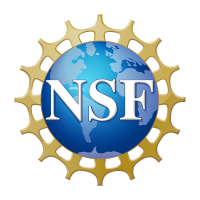Developing AI Literacy (DAILy) 2.0
4.4 Investigating LLMs
In this lesson, students interact directly with several LLMs to evaluate model performance and think critically about implications of model output for their work, their peers, and for society.
4.3 Prompting
In this lesson, students interact directly with several LLMs to explore differences in model output and performance. Through a guided investigation of LLM responses to different prompts, students learn that LLM output is 1) a probabilistic (answers are different nearly every time) and 2) not based on ground truth. They also learn to build different prompts or prompt frameworks for different purposes.
4.2 Fine Tuning
In this lesson, students do not use LLMs. Instead, then engage in playful, hands-on/unplugged activities that focus on the crucial stage of fine-tuning LLMs, highlighting the human influence on their behavior and output.
4.1 Pre-training
In this lesson, students do not use LLMs. Instead, then engage in playful, hands-on/unplugged activities that aim to demystify how LLMs learn language by exploring concepts like tokenization, vectors, and attention mechanisms. It consists of three activities, each building upon the previous one.
4.0 Intro to LLMs Lesson
In this lesson, students ≥13 use LLMs (i.e., chatGPT, Gemini, etc.) (teachers demo for students <13) to engage in a series of investigations that reveal how different LLMs can output misleading and/or biased information. By exploring and discussing these limitations, learners realize that biased output can be the result of patterns from the data, “hard-coded” or programmed directives from the developers, or personal bias.
Unit 4: Introduction to Large Language Models (LLMs)
This unit explores Large Language Models (LLMs) by focusing on the interplay between prompts and generated output. It uses a "hands-on" approach, employing unplugged games and simulations to demystify core LLM concepts.
Career Interview
This Career Interview activity is an extension of 1.5 Planting the Seed of STEM Jobs. Students, Our Young Professionals, are asked to interview a professional who they admire. The goal is to gain insight (inside info) into the planning, education journey and future prospects of a career of interest.
Cultural Lens
This activity is an extension of 0.5 Investigating Bias. Students will create a visual of their culture as a reference point to see how A.I. activity results or output may or may not represent their culture values, language and celebrations. The visual can be in any open-ended, creative form, like glasses or sunglasses, a wheel, or story map, or natural landscape with labels or descriptions of cultural features.
AI's Impact on my Family's Jobs
I had students reference the results of the O-Net survey (specifically). The second big change I made was toward the end, where the students are encouraged to also look at the careers that their immediate family members might have - so that they can see a potentially more immediate impact of AI to their family. This is designed for all students (any culture group), as each student will look inward at their own family situations and have a personal connection with the activity and its relevance.

